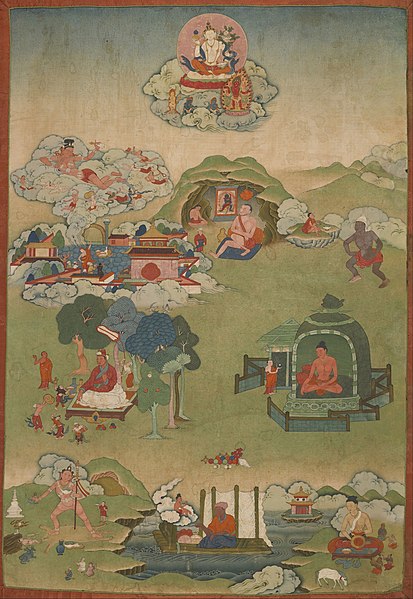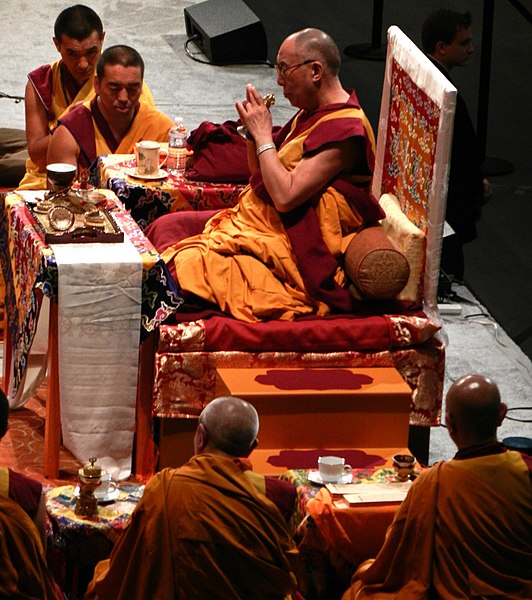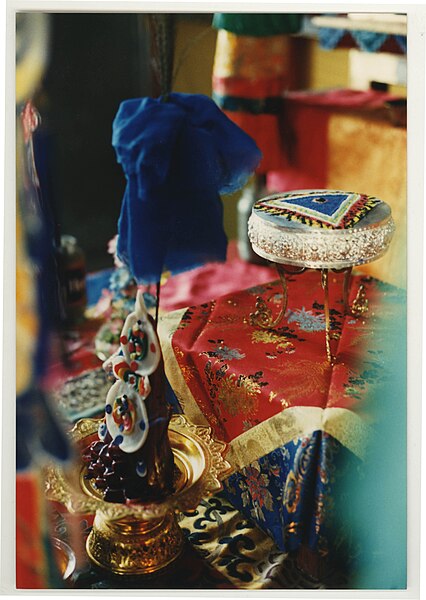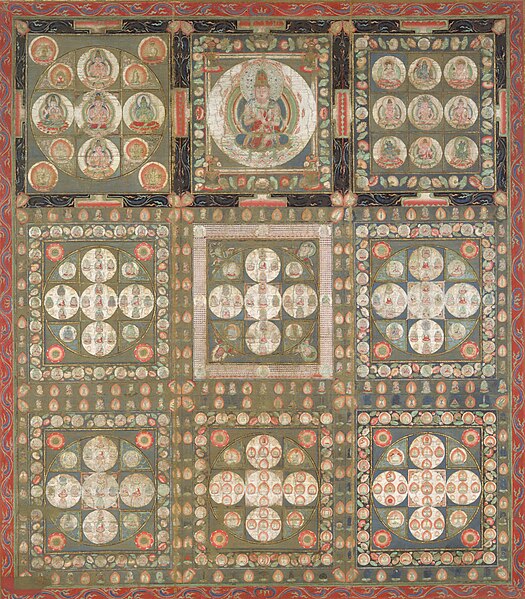Tibetan tantric practice, also known as "the practice of secret mantra", and "tantric techniques", refers to the main tantric practices in Tibetan Buddhism. The great Rime scholar Jamgön Kongtrül refers to this as "the Process of Meditation in the Indestructible Way of Secret Mantra" and also as "the way of mantra," "way of method" and "the secret way" in his Treasury of Knowledge. These Vajrayāna Buddhist practices are mainly drawn from the Buddhist tantras and are generally not found in "common" Mahayana. These practices are seen by Tibetan Buddhists as the fastest and most powerful path to Buddhahood.
A painting of various Mahasiddhas practicing different tantric yogas.
His Holiness the 14th Dalai Lama holds a vajra offering mudra while preparing the Kalachakra mandala during a Kalachakra initiation ceremony in Washington D.C., USA
A torma and mandala offering for a Vajrakilaya empowerment ceremony
Thangka depicting the Refuge Tree of the Karma Kagyu Lineage by Sherab Palden Beru, c. 1972.
Vajrayāna, also known as Mantrayāna, Mantranāya, Guhyamantrayāna, Tantrayāna, Tantric Buddhism, and Esoteric Buddhism, is a Buddhist tradition of tantric practice that developed in the Indian subcontinent and spread to Tibet, Nepal, other Himalayan states, East Asia, and Mongolia.
A vajra and bell (ghanta), which are classic ritual symbols of Vajrayāna
Mahasiddhas, Palpung monastery. Note the figure of the great adept Putalipa at center, seated in a cave and gazing at an image of the meditational deity Samvara and the figure at the bottom left holding a skull-staff (khaṭvāṅga) and a flaying knife (kartika).
Diamond Realm mandala, based on the tantric Vajrasekhara Sutra, and symbolizing the final realization of Vairocana Buddha in Shingon
Naked tantrikas dancing and eating from skull cups (kapalas), closeup of a Chakrasamvara mandala







